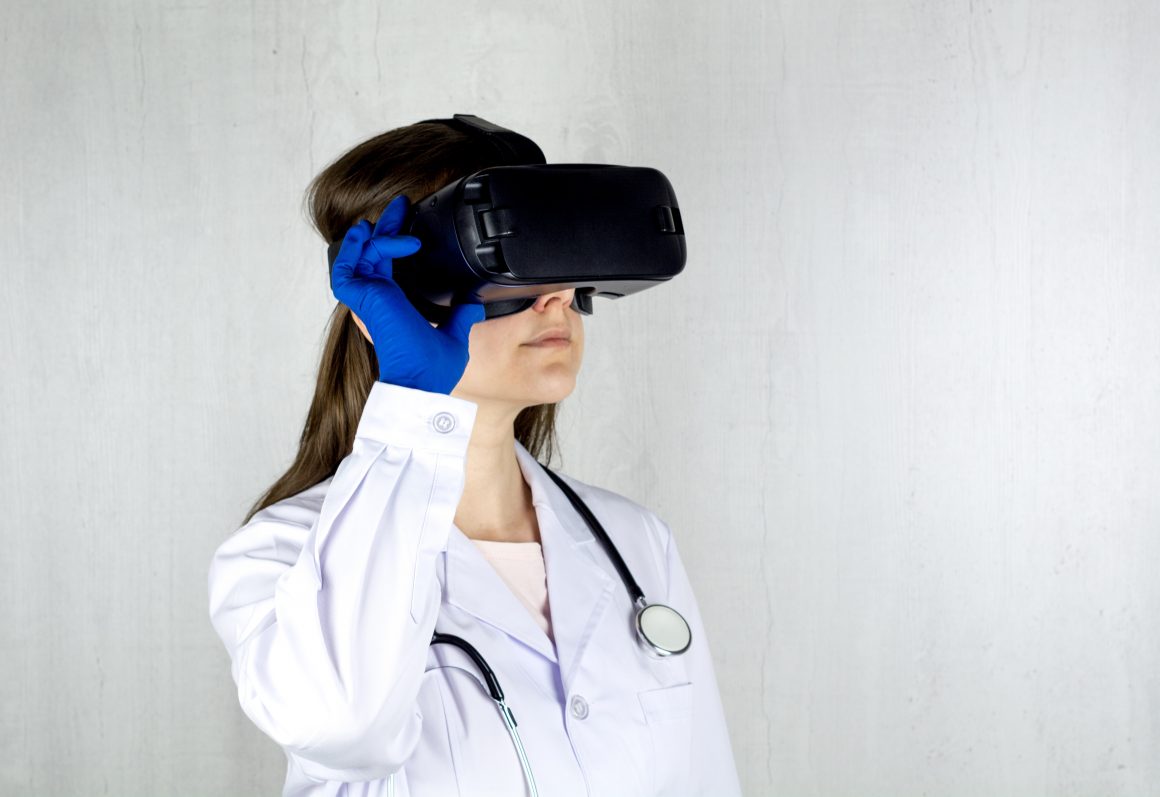
Unlocking virtual reality for residents in long-term care
By Julie Baek, April 14 2021—
Due to COVID-19 restrictions, long-term care residents are limited to having only one to two regular visitors, which is not enough to maintain a healthy social connection. Long-term care residents are being physically and mentally isolated from their communities. Modern technology, specifically virtual reality (VR) goggles, can be used to support the mental health of residents in long term care facilities by enabling them to maintain social connections with their loved ones. Similar to using 3D glasses in theatres, virtual reality goggles make people feel like they are in a different place by blocking out what’s in the background. As a result, people using VR goggles are immersed in this virtual reality that has vivid sounds, videos and images.
Starting on April 28, 2020, residents in long-term care facilities were limited to one designated essential visitor. This was later changed by the Chief Medical Officer of Health, Dr. Denna Hinshaw, so that by July 23, 2020, residents were allowed to have up to two visitors. Thus, due to this visitor limitation for almost a year, residents in long-term care facilities have been suffering from a lack of social connection. Although the policy was put in place to protect them, they are experiencing depression and feeling socially isolated as an unintended result of the policy. Researcher Cacioppo and his colleague showed that loneliness and social isolation can negatively influence cognitive capacity among older adults. In the case of residents in long-term care facilities, especially those living with dementia or Alzheimer’s’ Disease, this restriction could result in escalating symptoms.
Tabbaa and colleagues showed how VR could be used by older adults to experience the outdoors without leaving their rooms, in their recent paper titled “Bring the Outside In.” VR provides accessible and immersive experiences through 360 degree video. When residents used VR, their interaction capacity increased. Moreover, use of VR will allow residents with limited mobility to have active experiences and benefit from increased cognitively stimulating interaction. As a result, long-term care facilities have started to explore whether using VR goggles can benefit their residents, because they would be able to experience “going out” and “meeting people,” during the pandemic, without leaving their residence.
A long-term care facility in Calgary, Revera, has started offering a program using VR goggles so that their residents can experience the world outside. In this program, the residents’ loved ones can upload photos and videos on the VR hub system. These materials are automatically conveyed to the residents’ database so that the residents can access the pictures and videos and feel connected to their loved ones without any physical contact. Similarly, studies have shown how older adults and their loved ones can share an interactive VR environment even though they are not in the same room. Sharing this VR space will be beneficial during the pandemic period because it allows family members and residents to have a chance to be with their loved ones, despite the restrictions.
An additional suggestion is that long-term care facilities relocate their recreation programs to VR, to support the mental health of residents. For example, mindfulness programs can be delivered through the VR system. These mindfulness programs would have vivid images and video so that residents would be engaged and more focused on the activities. Also, facilities can plan virtual travel using the VR goggles and go on virtual holidays to any location or country. Residents could experience new destinations while seeing, listening and talking to other residents in the program, which might help the group feel connected and reduce feelings of loneliness and isolation. Additionally, dance programs in the VR system could increase participation. For example, long term care facilities can run a dance program that residents can participate in from their room following the safety restrictions. Similarly, the residents could see their friends in the VR program which could promote active participation and ultimately improve their physical health. As such, using the VR goggles, residents would be able access any recreational programs without limitation.
However, for some residents, a VR system might not be ideal. For example, if individuals suffer from delusion, using VR goggles could make their symptoms worse. Furthermore, there is a possibility that residents might become obsessed with using VR because the circumstances could be ideal and not really true. As a result, the VR contents should be thoroughly checked before being uploaded on the database. Ultimately, however, taking the necessary precautions, long-term care facilities may be able to utilize this high-tech gadget to unlock a higher quality of life for their residents.
Although there may be some pitfalls to using VR systems, there are many more benefits that residents in long-term care facilities can experience as a result of using this technology. Experiencing the outside world virtually and feeling connected to their society and other human beings will help residents manage their lives in the facilities.
This article is part of our Opinions section and does not necessarily reflect the views of the Gauntlet’s editorial board.
